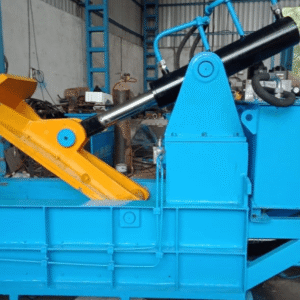For decades, engineers, architects, and AV designers have struggled with one of the most mundane yet mission-critical tasks: generating an accurate Bill of Materials (BOM). Whether you’re laying out a multi-room AV system, designing MEP schematics in Revit, or drawing blueprints in AutoCAD, creating an accurate BOM has historically involved manual data entry, Excel spreadsheets, and plenty of room for error.
However, with the rise of AI-powered platforms and smart BOM Assistant tools, it’s now possible to automate and optimize BOM creation with unmatched precision. When integrated with industry-standard software like AutoCAD, Revit, and XTEN-AV, these intelligent tools—capable of generating AI BOM, validating part data, and even integrating with suppliers—completely redefine how teams plan and execute design projects.
This blog is your definitive guide to using a BOM Assistant alongside AutoCAD, Revit, and XTEN-AV for accurate, streamlined, and intelligent AI Bill Of Materials generation. Whether you’re working in construction, architecture, or AV integration, this guide will empower you to leverage the Best BOM Management Software for your workflows.
Chapter 1: Understanding the Role of a BOM Assistant in Modern Design Workflows
What is a BOM Assistant?
A BOM Assistant is an AI-powered tool or software feature that automates the creation, validation, and management of BOMs across a project’s lifecycle. It extracts data from design files, validates parts against supplier databases, and ensures that all components are accurate, available, and compatible.
Why It Matters
-
Reduces manual work
-
Enhances accuracy
-
Enables real-time collaboration
-
Connects design tools with procurement systems
When paired with AI BOM tools, a BOM Assistant becomes more than just an aggregator—it becomes a smart collaborator, capable of improving BOM structure based on past projects, current specs, and industry standards.
Chapter 2: Integrating BOM Assistant with AutoCAD – The Workflow Blueprint
AutoCAD in Design
AutoCAD remains one of the most widely used tools for 2D and 3D drafting in architecture, engineering, and AV design. However, BOM creation in AutoCAD typically relies on external Excel files or manual markups.
Using BOM Assistant with AutoCAD
-
Tagging Components
Use block attributes or dynamic blocks to tag all parts and equipment within AutoCAD. -
Export Metadata
Use Data Extraction tools to export drawing metadata in formats like CSV or XML. -
Upload to BOM Assistant
Import this data into a BOM Assistant platform with BOM Management Software capabilities. -
AI BOM Generation
Let the assistant use this structured data to auto-generate a smart AI Bill Of Material with part details, quantities, pricing, and descriptions.
Benefits
-
Avoids duplication
-
Ensures part numbers match database entries
-
Speeds up the quote-to-build process
Chapter 3: Using BOM Assistant with Revit – Smarter BIM BOMs
Revit’s Strength in BIM
Revit excels in Building Information Modeling (BIM), offering a data-rich 3D environment for architectural, structural, and MEP systems. The challenge is often exporting and organizing component data into a clean, structured BOM.
How BOM Assistants Integrate with Revit
-
Parameter Mapping
Ensure Revit families have clearly defined parameters (e.g., Manufacturer, Type Mark, Cost). -
Schedule Export
Create custom Revit schedules or use plugins to export BOM-related data in compatible formats. -
AI Validation
Upload to the BOM Assistant to automatically detect missing fields, obsolete items, or compliance issues using AI BOM logic. -
Version Control
As Revit models evolve, the BOM Assistant compares changes and flags discrepancies in the AI Bill Of Materials.
Benefits
-
Saves time on schedule creation
-
Avoids errors caused by inconsistent family data
-
Ensures alignment with downstream systems
Chapter 4: XTEN-AV and BOM Assistant – Designed for AV BOM Intelligence
What is XTEN-AV?
XTEN-AV is a leading platform for AV system design and documentation. It automates the creation of proposals, schematics, and system designs—and crucially, it includes a powerful AI-based BOM Assistant built specifically for AV projects.
How XTEN-AV Automates AV BOM Creation
-
Design in XTEN-AV
Use drag-and-drop blocks or intelligent system templates to lay out an AV system. -
Real-Time BOM Creation
XTEN-AV automatically generates the AV BOM in real-time as you design—each item includes manufacturer data, quantities, and pricing. -
Smart BOM Assistant Features
-
Vendor pricing integration
-
Cable and connector pairing suggestions
-
Rack space optimization
-
Scope-specific filtering
-
-
Export and Sync
Export in formats like Excel, PDF, JSON—or sync with procurement platforms and ERP systems.
Why It’s a Game-Changer
-
Tailored specifically for AV integrators
-
Reduces design-to-documentation time by 70%
-
Integrates AI-driven optimizations for hardware, cabling, and layout
Chapter 5: Cross-Platform BOM Management—AutoCAD, Revit, and XTEN-AV Together
Why Cross-Tool Compatibility Matters
Design teams rarely work in just one platform. Architects use Revit, electrical engineers rely on AutoCAD, and AV designers might prefer XTEN-AV. A modern BOM Management Software must unify all sources of data.
How BOM Assistant Tools Create a Centralized Workflow
-
Data Aggregation
Import metadata from Revit, DWG files from AutoCAD, and project designs from XTEN-AV. -
Unified BOM Creation
The AI BOM engine consolidates inputs and removes overlaps or conflicting data. -
Smart Suggestions
-
Replaces deprecated products
-
Suggests cost-effective alternatives
-
Syncs quantities across disciplines
-
-
Live Dashboard and BOM Optimization
Visualize BOM changes in real time, track cost impact, and refine the AI Bill Of Materials collaboratively.
Chapter 6: Key Benefits of Using BOM Assistant Across Design Platforms
| Benefit | How It’s Achieved |
|---|---|
| Time Savings | Auto-generation from models and drawings |
| Accuracy | AI validation and part compatibility checks |
| Procurement Efficiency | Real-time vendor integration |
| Consistency | Unified templates and field mapping |
| Collaboration | Cloud access and version control |
| Cost Control | Insight into material and labor costs |
By combining data from AutoCAD, Revit, and XTEN-AV, your Bill Of Materials Management Software becomes a powerful hub of collaboration and business intelligence.
Chapter 7: Best Practices for Implementation
1. Define Your Standards Early
Customize your BOM templates with relevant fields and compliance markers.
2. Maintain Clean Data in Source Tools
Ensure AutoCAD blocks and Revit families are tagged correctly. Garbage in = garbage out.
3. Leverage the BOM Assistant’s AI Learning
The more projects you process, the smarter the tool becomes. Use historical data for better suggestions.
4. Connect Procurement Systems
Bridge your AI BOM with your ERP system to automatically initiate RFQs and POs.
5. Review and Validate
Use the validation engine to cross-check for part availability, compatibility, and version changes.
Chapter 8: The Future of AI BOM Generation with Integrated Design Platforms
Looking ahead, AI Bill Of Materials solutions will:
-
Predict maintenance and lifecycle needs
-
Recommend greener, more sustainable parts
-
Auto-generate compliance documentation
-
Link to 3D printing and digital twin platforms
Integration between tools like XTEN-AV, Revit, and AutoCAD isn’t just a technical upgrade—it’s the foundation of intelligent design ecosystems that connect planning, design, execution, and operation in a seamless digital loop.
Conclusion
In an increasingly complex world of interconnected systems, fragmented design tools are no longer sufficient. Whether you’re designing electrical blueprints in AutoCAD, managing architectural BIM in Revit, or laying out immersive AV environments in XTEN-AV, integrating your design workflows with a smart BOM Assistant creates a single source of truth.
With the power of AI BOM technology and tools like XTEN-AV leading the charge, the Best BOM Management Software today doesn’t just manage data—it transforms it into insight, efficiency, and competitive advantage.
Read more: https://enhanceyourwebsites.com/top-10-features-to-look-for-in-a-bom-assistant-tool/





